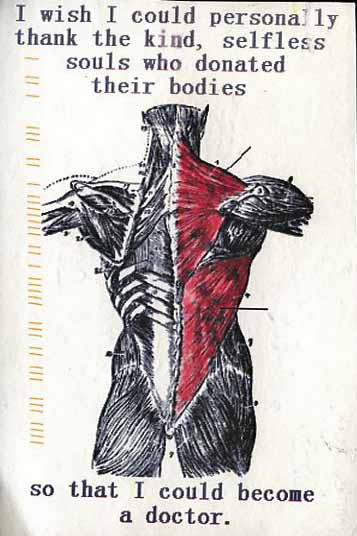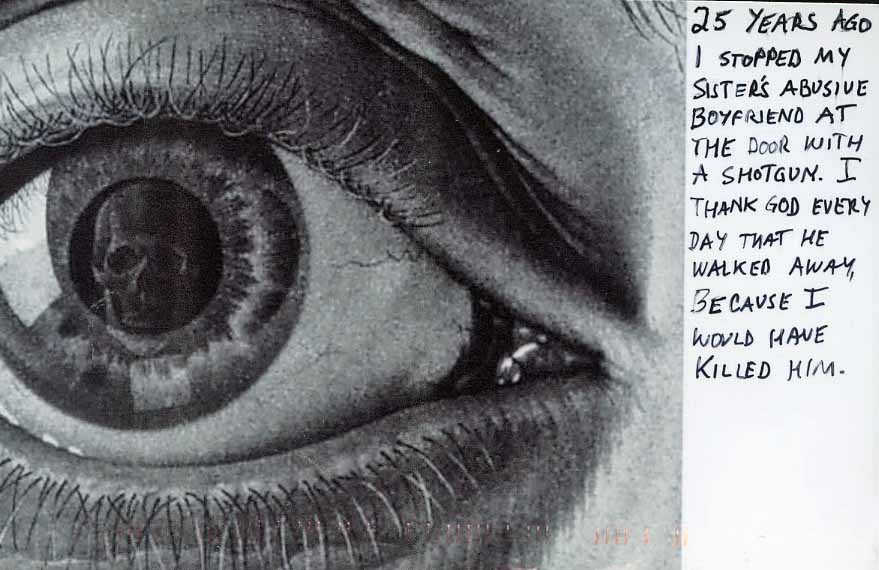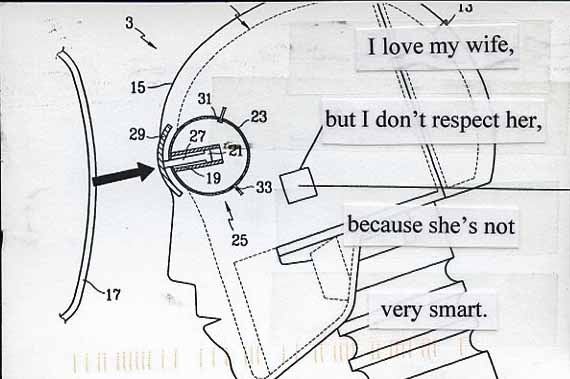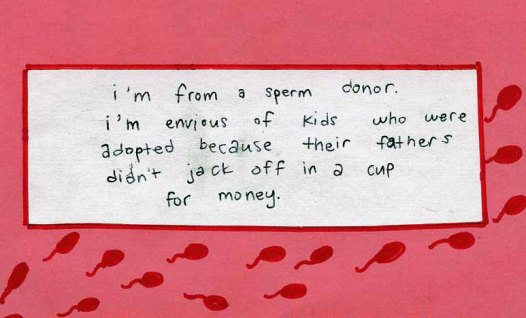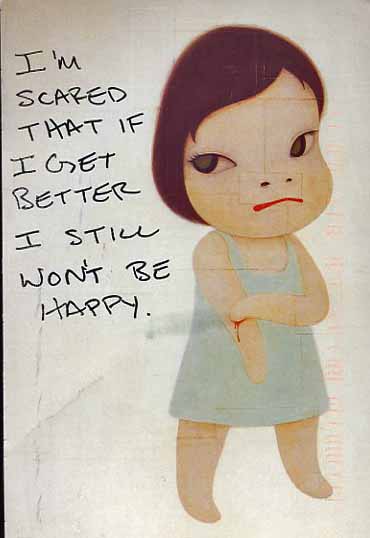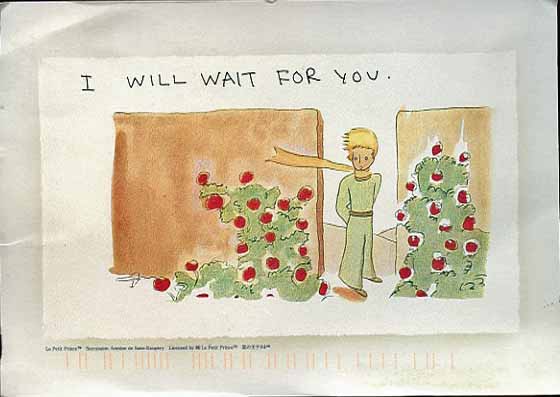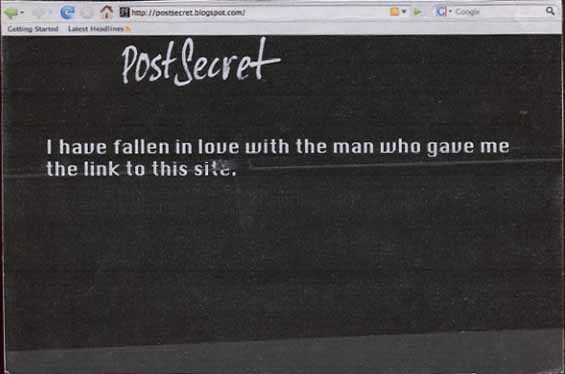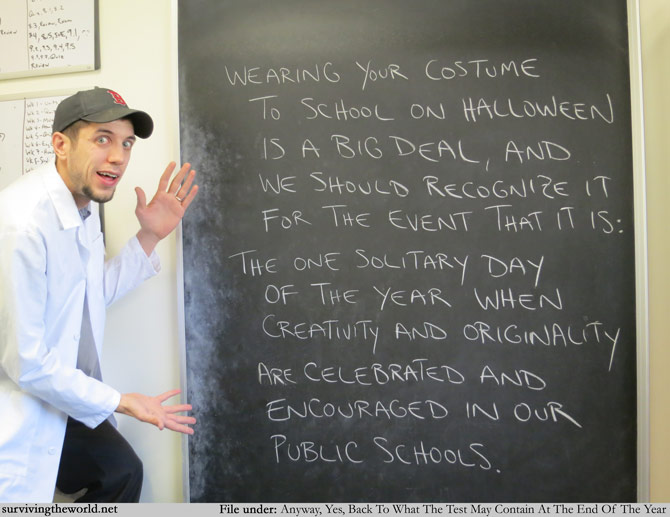Shared posts
The Lure of Meta Media
Google Express Doesn’t Replace Amazon Prime, But It’s Still Pretty Useful

In the arms race between Amazon and Google, homebodies are the clear winners. (Warehouse workers… not so much.) But Google’s latest parry, Google Express, sidesteps the warehouse entirely, delivering orders from your local stores straight to your home. It works a bit differently than Prime, even with Amazon’s recent…
How to Add Nitrogen to Compost
Compost is high in organic material and can help keep your lawn and plants healthy. Amazingly, you can create compost with things that you would usually just throw away like table scraps, lawn clippings, and dead leaves. Sometimes, however, compost can become nitrogen deficient, and will stop breaking down. If you notice that your compost is not decomposing over the course of several months, it means that you need to add more nitrogen to it.[1] Luckily, there are a wide variety of ways you can increase the nitrogen levels in your compost by adding commonly found ingredients.[2]
EditSteps
EditAdding Gardening Materials to Compost
- Add fresh grass clippings to the compost. Collect the grass clippings left after you mow your lawn. Add the clippings in thin layers to the compost so that it doesn't clump up into big chunks.[3]
- Make sure that your grass clippings are fresh because dried grass clippings will add carbon to the compost.[4]
- Add leafy plant clippings and weeds to the compost. Green plant clippings, weeds, and freshly cut flowers from your lawn can also increase the nitrogen found in your compost. After trimming the plants on your lawn, add the remains to your compost. Do not, however, let the green material dry out or you'll be adding more carbon to the compost.[5]
- Do not add badly diseased or insect-infested trimmings, or weeds that contain seeds to your compost unless your compost is hot enough to destroy them.
- Add chicken droppings. Chicken droppings are extremely rich in nitrogen and most poultry farmers are happy to give it away if you want.
- Add manure to increase the nitrogen in your compost. A ratio of one part manure for every five parts of carbon material will bring your compost's nitrogen level to a healthy level. Look for manures or fertilizers that have a high nitrogen number, such as a 48-0-0 fertilizer.[6]
- In a 5x5 foot (1.52 x 1.52 m) bin of compost you'd add 1/3 to 1/2 cup (113 - 170 g) of fertilizer to the compost.
- Incorporate blood or bone meal into your compost. You can purchase blood or bone meal at home and gardening stores or online. Combine one to two pounds (453.59 - 907.18 g) of bone or blood meal per 100 pounds (45.35 kg) of carbon material.[7]
- Pour corn-gluten meal into the compost. Read the instructions on the back of the corn gluten meal to know how much you should add to your compost. Sprinkle the meal on top of the compost to increase the compost's nitrogen levels. You can purchase corn-gluten meal online or at some gardening stores.[8]
- Sprinkle nitrogen-rich granular fertilizers into your compost. You can buy nitrogen-rich granular fertilizer at a home and gardening store or online. This fertilizer comes in small balls and can be sprinkled on top of your compost to increase the nitrogen levels. Look on the packaging to make sure that the granular fertilizer that you are purchasing is high in nitrogen and low in carbon.[9]
EditAdding Household Waste to Compost
- Combine coffee grounds into your compost. Add one part coffee grounds to one part grass clippings and one part leaves to create a nitrogen rich compost pile. Coffee grounds contain 20 parts of nitrogen to one part of carbon, making it an exceptionally nitrogen-rich amendment.[10]
- Use the leftover coffee grounds from after you brew coffee.
- If mold grows on your coffee grounds you can still use them because it will be broken down during the composting process, or help in the process.
- Add fruit and vegetable scraps to your compost. Instead of throwing away vegetable and fruit scraps, add them to your compost pile after you're done with ingredient preparation. These are high in organic material and will add nitrogen to your compost pile.[11]
- Be wary of adding meat, feces, eggs, or dairy products to compost. These compost ingredients may attract wild animals if not covered. A well-running pile can POSSIBLY accept them. Avoid adding pet feces to the compost because it could spread disease.[12]
EditCreating Compost
- Lay twigs, straw, and dry leaves inside of a container. Lay 4 - 8 inches (10.16 - 20.32 cm) of dry leaves twigs and straw on the bottom of a closed container. This carbon-rich material will help aerate the bottom of the compost and help keep it moist.[13]
- Lay down 4 - 8 inches of nitrogen-rich material. Use organic material like lawn clippings or table scraps and layer it on top of your twigs and leaves.[14]
- Continue to alternate layers of carbon-rich and nitrogen-rich material. Continue to lay down the dry twigs and green organic material in layers until your compost pile is around 3 feet (91.44 cm) deep.[15]
- Spray the organic material with water. The compost materials should remain moist so that it breaks down to form compost. Check on your compost daily to make sure that it isn't drying out from the hot sun. Spray down the organic material every day so that it stays moist.[16]
- Keep the bin in the sun. The center of the compost should be kept at 130 -150°F (54.4 - 65.5°C) if possible. Use a thermometer to get the temperature of the compost. Keeping the compost at a high heat will increase decay and quicken the time that the material turns into compost. You can also cover the container for the compost so that animals can't get into it, but this may cut off air supply.[17]
- Without heat, the compost will take anywhere from 6 -12 months to fully break down.
- Turn the compost once a week. Continue to keep the compost hot and wet. Turning the compost over once a week will add oxygen to the compost, a necessary component to composting.[18]
- Wait two months. Continue to turn your compost once a week and water it regularly. In two to three months the compost will ultimately break down. When the compost is ready it will be brown, crumbly, and sweet-smelling. You can now use the compost to promote healthy growth in your lawn and plants.[19]
EditVideo
EditThings You'll Need
- Lawn clippings
- Plant clippings
- Coffee grounds
- Fruit and vegetable scraps
- Other food garbage
- Blood or bone meal
- Manure
- Corn-gluten meal
- Twigs, straw, or dried leaves
- Large enclosed bin
- Water
EditRelated wikiHows
EditSources and Citations
Cite error: <ref> tags exist, but no <references/> tag was found
Please Don’t Overcomplicate Twitter Any More

Everybody’s buzzing about Twitter’s reported plan to ditch the 140-character limit. Then there are the other details that involve omitting mentions and links from the character count. These are dreadful ideas that will perplex Twitter users more than Twitter already does.
A Softer World: 1139

buy this comic as a print!
Or share on:
 facebook
facebook reddit
reddit If you enjoy the comic, please consider supporting A Softer World on Patreon
Chromecast Now Pairs With Phones Using SImple Ultrasonic Pulses
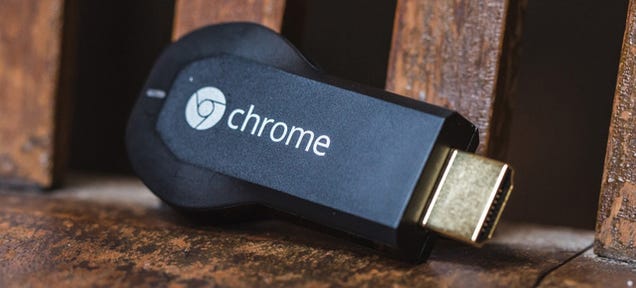
Google's Chromecast picked up a slew of great new features the other day . But it's also getting a new system for pairing devices which doesn't rely on sharing a Wi-Fi network—instead, it uses ultrasound. And it's more simple than it sounds.
Suntory Time: Crazy CNC-Milled Ice Cubes for Whisky Brand

It’s Suntory time – on the incredibly intricate, CNC-milled, pagoda-shaped rocks. The Japanese whisky brand famously touted by Bill Murray in the film ‘Lost in Translation’ has enlisted the services of a 5-axis CNC mill to craft miniature works of art in ice, including replicas of the Statue of Liberty and Michelangelo’s David.

The centerpiece of Suntory’s “3D Rocks” campaign is a teeny-tiny, amazingly detailed version of Kyoto’s Kinkaku-ji temple. Watch it in progress in the video above.

Suntory customers were asked to submit their own designs, and the winners were whisked to a secret location in Tokyo where they received a drink featuring their own creation in ice once it was complete.

The CNC router was kept chilled to a temperature of -7 degrees Celsius to keep the ice from melting while the machine was running.

It’s almost a shame to see the whisky splashing over these ephemeral works of art, knowing that they’re inevitably about to melt away.
Want More? Click for Great Related Content on WebUrbanist:

Brand Boogaloo: 10 Ways Brands & Buyers Adapt to Change
In today's world of information overload and soul-killing McJobs, however, brand saturation is turning marketing mantras on their heads. From debranding to ... Click Here to Read More »»
Hidden Logos: 12 Creative Brand Designs with Secret Symbols
What do you see when you look at these logos - letters and seemingly random shapes? Take a closer look; hidden symbols and meanings abound. Click Here to Read More »»
Con Jobs: 10 Outrageous Apple Brand Ripoffs
If imitation is the sincerest form of flattery, then a host of eager entrepreneurs REALLY admire Apple Inc. and its visionary founder/CEO, the late Steve Jobs. Click Here to Read More »»



[ By Steph in Art & Sculpture & Craft. ]
[ WebUrbanist | Archives | Galleries | Privacy | TOS ]
Mesmerizing video shows how to make a dragon egg from Game of Thrones
JanelI want a dragon's egg. Actually, I'd rather learn how to make a dragon's egg.

I love to see talented people crafting objects. This is a good example: How to make a dragon egg from Game of Thrones "using the technique of repousse, chasing and metal spinning." Mesmerizing.
Here's what an explosion of flavors literally looks like
JanelFor some reason this really appealed to me

We know it's tasty and delicious but who knew flavor could be so beautiful? This audio visual installation by Schwartz Flavour Shots riffs off the explosion of flavors one tastes with spices by literally exploding those flavors. Several tons of black pepper corns, cardamom, turmeric, paprika, cumin seeds, ginger, chili and coriander were placed in explosive bags, rigged to explode on certain notes. Looks delicious.
I Am… Viscacha!
JanelOh we saw this! I didn't know it what it was at the time they were hanging out in Machu Pichu
On the plains and mountains of Peru, there you will find Viscacha. My cousin is the Chinchilla, but he has the ears that are stumpy, not tall and proud like Viscacha. But neither is Viscacha the bunny rabbit, for their tails are like, how you say, the puff powder, not long and curly like Viscacha.

When Viscacha is threatened, I emit a fearsome roar!

There are some who say that to sniff the fur of Viscacha produces the visions of beauty in the mind. But this is the nonsense.

Photos via: The Lost But Not Forgotten, the Cutest Paw, and the James Brunker.
Filed under: Uncategorized Tagged: Unusual Animals
The Airship Heaven That Upstate New York Never Was
JanelOh upstate NY....

All Over Albany recently posted this futuristic illustration of Troy, New York drawn in 1916. The image shows Troy in the year 2016: the streets lined with streamlined buses and trolleys, the sky filled with giant airships, and a rather phallic-looking building towering over downtown.
Single Origin Coffee Aged in a Pinot Noir Barrel? Only in Portland
JanelPortland....

[Photo: James Holk]
I know, I know. We're all thinking the same thing. Portland found one more thing they could infuse with booze? This time, a beautiful single origin coffee from El Salvador, aged in an oak Pinot Noir barrel? Sure. But think again: beyond gimmick and Portlandianism, to a subtle, thoughtfully conceived coffee roasted by Southeast Portland roaster Water Avenue Coffee, balanced and still very much a coffee beverage.
Water Avenue partner and roaster Brandon Smyth came to the unusual idea—coffee beers are sometimes aged in oak barrels, but not coffee coffees—through winemaking.
"A long while back, when I was still roasting at Stumptown, I was making my own wine. And you can either go out and buy a barrel, which is pretty expensive, or you can add oak powder to wine. And I was making a red wine and I was tasting it before and after I put the oak in there, and what I expected was the oak to tasty oaky, to taste woody. But it actually brought out a bunch of berry, fruit flavor! So I thought, oh man, that'd be cool to try that with some coffee."
Smyth originally dropped the oak experiment on some Sumatran coffee beans, post-roasting, and found the final brew fruity and "more burly" but overall a bit extreme. His next move was to try aging green, unroasted coffee beans for a short time in a barrel used for making red wine. But it's not as easy to find a good used wine barrel as you might think—Smyth says one vintner was "so confused by what I was asking and what I was planning to do with it that he thought I was a crackpot." But when he finally came into possession of a decommissioned Pinot Noir barrel from Oregon vintners Crowley Wines, he knew he just had to use the right coffee. "I opened it up and it just smelled amazing," Smyth said. "Like cherries."
Luckily, Water Avenue already had a coffee called El Manzano from El Salvador in their repertoire—a coffee with whose farm they've had an ongoing relationship, and which offers flavors of apple, dark berries, caramel and chocolate, while still maintaining a sunny acidity. It's also a pulp natural processed coffee, meaning the freshly harvested coffee undergoes its drying period with the fruit's mucilage still on the bean, which can result in sweeter and fruitier flavor in the cup.
"I thought, it's a pulp natural, and the fruit flavor it had had a lot of red apple to it," said Smyth. "There's a certain crispness to it that I felt if you were going to add anything to it, that clarity of that coffee would only bring it out more. The barrel's not going to cover anything up that would actually be detrimental to the flavor," said the roaster.
"To me, those fruits that come out, the cherry from the barrel work really well with the red apple from the Manzano. I also feel like having a little bit of pulp helps the coffee absorb the flavor. Pulp naturals age really well, they have a lot of that pectin on the bean that helps protect them from the environment."
And the results are vivid: a balanced coffee whose intrinsic apple and cocoa flavors and the delicate oak and cherry additions exist in harmonious parallel. You can separate them out in your brain—but in a way that is more likely to surprise and make you rethink tasting than anything else.
Water Avenue has already gone through 300 pounds of the 13-day-aged coffee beans, and they expect to be able to age another 500 pounds before they think the barrel flavor will begin to fade—then again, Smyth doesn't really know when that will happen, because nobody's tried this before. What's next?
"I know a guy down here who's a cooper making cedar barrels, so we're going to do a cedar one which might be interesting. I don't want to get too far into it because, while it's interesting and it's fun, I'd like to have one thing going on, or all of the sudden, are we flavoring coffee? Is it just manufacturing it, or a certain kind of gimmick," mused Smyth. "I don't want to get too weird."
About the author: Liz Clayton drinks, photographs and writes about coffee and tea all over the world, though she pretends to live in Brooklyn, New York. She is the creator of Nice Coffee Time, a book of photographs of the best coffee in the world, published by Presspop, is the New York City correspondent for Sprudge.com, and contributes to other outfits worldwide.
Freshness Burger Invents a Wrapper That Acts as a Privacy Shield

[Photographs: Freshness Burger]
Who amongst us, at one time or another, hasn't wished that a particularly large or sloppy burger could come with a privacy shield? That's exactly what Japanese burger shop Freshness Burger has done with their "Liberation Wrapper", a burger holding device that allows women to tear into the shop's largest item (the "classic burger") with abandon, while maintaining the appearance of "ochobo"—a small and modest mouth.

Before the debut of the new burger wrapper, the classic burger was the least-ordered item by women. With the invention of the wrapper, sales have increased a reported 213% compared to the previous month, according to this video which explains the liberation wrapper and features depictions of happy female customers getting all up in their burger's business.
Without getting too deep into the gender politics of the invention (or how the image of the closed mouth printed on the wrapper looks a bit creepy), I have to say... this really isn't a bad idea. I'd take it even further, and provide customers with burger isolation booths, so that they could eat as messily as they want while pounding the table, praising the burger gods, or letting loose a profanity-laced exaltation of their burger without fear of judgment. I don't know about you, but that's what I'm looking for in a burger-eating experience.
[via: Foodbeast]
About the author: Erin Jackson is a food writer and photographer who is obsessed with discovering the best eats in San Diego. You can find all of her discoveries on her San Diego food blog EJeats.com. On Twitter, she's @ErinJax
Love hamburgers? Then you'll Like AHT on Facebook! And go follow us on Twitter while you're at it!
Loving father built a prosthetic hand for his son with a 3D printer
Kids are just the best. And dads who love their kids make them even better. Leon is a boy who was born without fingers on one of his hands. Instead of making him think he was different, his father Paul McCarthy made him believe he was special. In fact, McCarthy made a prosthetic hand with a 3D printer so his son could be excited to become a cyborg. And Leon totally is.
Would anyone like to purchase my tumblr in exchange for paying...
JanelAnd student loans are the only ones that will stay with you if declare bankruptcy and garnish your wages.

Would anyone like to purchase my tumblr in exchange for paying my architecture student debt…
Lesson #1919 - Halloween at School
Only because humans can't fit through Scantron machines. But just give it time! We're working on a prototype.
PHD UNKNOWN - my other webcomic about fierce creatures, biology, and grad school
SCIENCE THE WORLD - research on STEM
education open to all K-12 educators
16 Incredible Animals and Landscapes You Can Only See With a Microscope
Every GPS App Should Make You Follow an Adorable Pack of Penguins
JanelCute!
For a while, novelty celebrity voiceovers were all the rage when it came to GPS navigation units. But the Sunshine Aquarium in Tokyo has come up with a far more adorable way to get to your destination: by following a muster of virtual waddling penguins.
NeverWet Graffiti: Invisible-Ink Street Art Shows Up in Rain
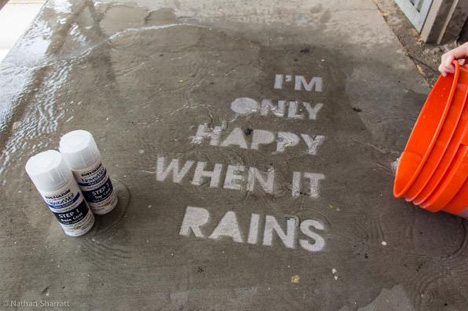
NeverWet has been making headlines as the silicon-based spray that repels liquids from clothes and electronics, but this off-book use shows another fascinating application that may be even longer-lasting: urban art invisible until poured upon.
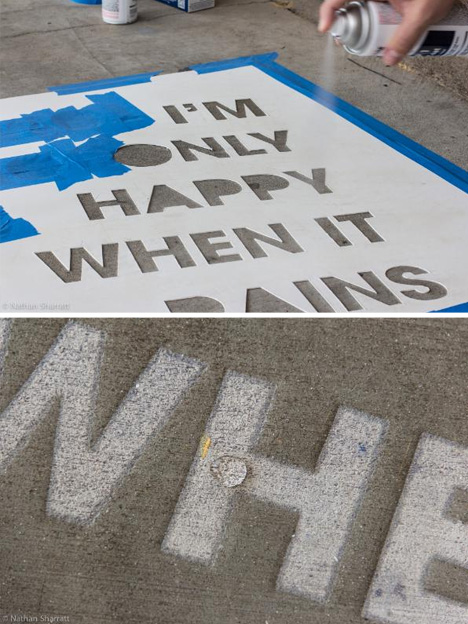
As part of a Home Depot competition, Nathan Sharratt decided to create stencils and spray hydrophobic NeverWet onto streets and sidewalks, resulting in areas of deflected moisture surrounded by soaked concrete. Like invisible ink, the water-repellent areas remain hidden until another liquid is applied.
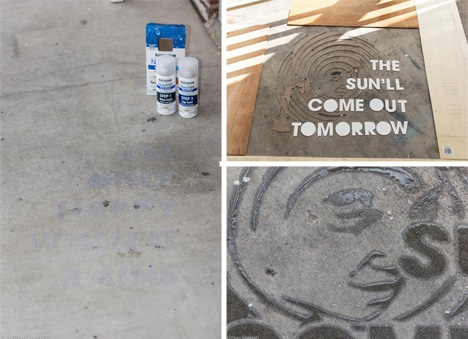
Given criticism of NeverWet when applied to shoes (apparently it can discolor or leave residue) and phones (touchscreen and durability issues have been reported), this may prove to be a more persistent, if unintended, long-term application of the product.

And for any interested subversive artists, it could prove a unusual boon when bothered by police: how will the authorities justify arresting someone for spraying an invisible coating on a public surface? Meanwhile, best of luck to Nathan in the contest – a win here is surely deserved! As one reader (3AlarmLampscooter) from Reddit noted: there are practical and legal street applications of this too, potentially: “Instead of a sign saying slippery when wet… graffiti saying slippery.” That, and consider: sidewalk happy-hour signs for drink specials in the rain, or way-finding messages for seeking shelter in a storm. Many interesting possibilities.
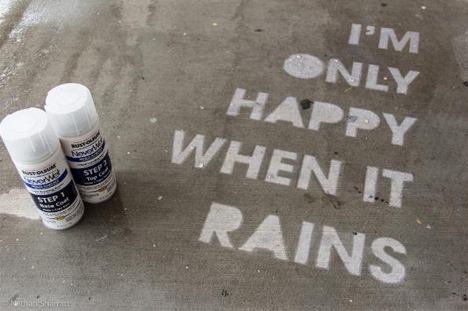
Short-form instructions for those looking to (officially: don’t!) try this at home or in the neighborhood: “Step 1: You need a stencil. You can do something simple or use an image that includes a fair amount of detail. I created my own stencils from cardboard, but there’s no reason you can’t use a ready-made or store-bought stencil. Just know that NeverWet will get sprayed on that, too. Step 2: Place stencil on concrete. I recommend that you only try this on light-colored concrete for best results. Step 3: Spray the NeverWet into the cut-out areas of your stencil according to the manufacturer’s instructions found on the label. I did two base coats and two top coats.”




[ By WebUrbanist in Art & Street Art & Graffiti. ]
[ WebUrbanist | Archives | Galleries | Privacy | TOS ]
#965; In which Anger finds its Roost
I Can Has Wiper?
JanelCan someone try this with their cat?
Mei is DETERMINED to get her paws on THESE DREADED WIPERS! Japan FTW, once again!
Mei likes going to the gas station, too. She appreciates the full service! (Does Mei have her own book deal, too?)
Spotted on DP&F.
Filed under: Uncategorized Tagged: Big in Japan, kitteh
128. BILL WATTERSON: A cartoonist’s advice
Bill Watterson is the artist and creator of (in my humble opinion) the greatest comic strip of all time, Calvin and Hobbes. I was a bit too young to appreciate it while it was originally published from 1985-1995, but I started devouring the book collections soon after. I think my brother had a few of the treasury collections and I must have read those dozens of times. I was hooked, and I remember copying Watterson’s drawings relentlessly as a kid (Calvin’s hair was always the hardest to get right).
To me, Calvin and Hobbes is cartooning perfection – that rare strip that has both exquisite writing AND gorgeous artwork. A strip that managed to convey the joy of childhood, absurdity of humanity and power of imagination all through the relationship between a boy and his stuffed tiger. And most importantly, a strip that was consistently laugh-out-loud funny. I flick through my Calvin and Hobbes books a few times a year, not to read them cover to cover anymore, but just to get lost in Calvin’s world for awhile and to remind myself what comics are capable of.
Besides the fact that Calvin and Hobbes is the comic I cherish above all others, Bill Watterson is my biggest creative influence and someone I admire greatly as an artist. Here’s why:
• After getting fired as a political cartoonist at the Cincinnati Post, Watterson decided to instead focus on comic strips. Broke, he was forced to move back in with his parents and worked an advertising layout job he hated while he drew comics in his spare time. He stayed at this miserable job and submitted strips to comic syndicates for four years before Calvin and Hobbes was accepted. About this period Watterson wrote: “The only way to learn how to write and draw is by writing and drawing … to persist in the face of continual rejection requires a deep love of the work itself, and learning that lesson kept me from ever taking Calvin and Hobbes for granted when the strip took off years later.” (Also see the Advice for Beginners comic.)
• Watterson sacrificed millions (probably hundreds of millions) of dollars by never licensing and merchandising Calvin and Hobbes. He went through a long and traumatic fight with his syndicate over the licensing rights, and although he eventually prevailed, Watterson was so disillusioned with the industry he almost quit cartooning. “I worked too long to get this job, and worked too hard once I got it, to let other people run away with my creation once it became successful. If I could not control what my own work was about and stood for, then cartooning meant very little to me.”
• Luckily Watterson didn’t quit and took a sabbatical instead. Eager to reinvigorate his creative mojo on his return, Watteron proposed a radical new layout for his colour Sunday strips. For those not familiar with comic strip lingo, each week a newspaper comic will have six ‘daily’ strips (usually black and white, one tier, 3-4 panels) and one ‘Sunday’ strip which is larger and in colour. Previously, the Sunday strip was comprised of three tiers of panels and looked like this. The layout was restrictive and the top tier had to be completely disposable because a lot of newspapers would cut it and only run the bottom two tiers in order to save space so they could cram in as many comics (or puzzles, or ads) as they could.
Watterson was sick of the format restraints and wanted more space to experiment and push his storytelling ability so he (with his syndicate’s support) gave newspaper editors a ballsy proposition. They would have to publish his Sunday comics at a half-page size with no editing, or not publish it at all. By this time Calvin and Hobbes had been running for over five years and was extremely successful so Watterson had the clout needed to pull this move off. Despite fearing many cancellations, he was pleasantly surprised that most newspapers supported the change. Free of the shackles of tiers and panel restrictions, Watterson gave us visually exciting and beautiful strips that hadn’t been since the glory days of newspaper comics in the 1920s and 30s. He was free to create strips like this, and this and this. “The last few years of the strip, and especially the Sundays, are the work I am the most proud of. This was close as I could get to my vision of what a comic strip should be.”
• After working on the strip for 10 years, when Calvin and Hobbes was at the height of its popularity and was being published in over 2,000 newspapers, Watterson stopped. He had given his heart and soul to one project for 10 years, had said all he wanted to say and wanted to go out on top. “I did not want Calvin and Hobbes to coast into half-hearted repetition, as so many long-running strips do. I was ready to pursue different artistic challenges, work at a less frantic pace with fewer business conflicts, and … start restoring some balance to my life.” Since retiring the strip, Watterson has pursued his interest in painting and music.
It’s pretty incredible when you think about. Could you say ‘no’ to millions, I repeat, MILLIONS of dollars of merchandise money? I don’t know if I could. Would you stop creating your art if millions of people admired your work and kept wanting more? I don’t know if I would.
Reprints of Calvin and Hobbes are still published in over 50 countries and the strips are as fresh and funny as they were 20-25 years ago. It has a timeless quality and will continue to entertain comic fans for generations to come. Great art does that.
- The quote used in the comic is taken from a graduation speech Watterson gave at his alma mater, Kenyon College, in 1990. Brain Pickings has a nice article about it. The comic is basically the story of my life, except I’m a stay-at-home-dad to two dogs. My ex-boss even asked me if I wanted to return to my old job.
- My original dream was to become a successful newspaper comic strip artist and create the next Calvin and Hobbes. That job almost doesn’t exist anymore as newspapers continue to disappear and the comics section gets smaller and smaller, often getting squeezed out of newspapers entirely. I spent years sending submissions to syndicates in my early 20s and still have the rejection letters somewhere. I eventually realised it was a fool’s dream (also, my work was nowhere near good enough) and decided webcomics was the place to be. It’s mouth-watering to imagine what Watterson could achieve with webcomics, given the infinite possibilities of the online medium.
- My style is already influenced by Watterson, but this is the first time I’ve intentionally tried to mimic his work. It’s been fun poring through Calvin and Hobbes strips the past week while working on this comic and it was a humbling reminder that I still have a long way to go.
- The quotes I’ve used in the write-up above are taken from the introduction to The Complete Calvin and Hobbes collection, which sits proudly on my desk.
- Thanks to Marlyn, Emily, Joseph, and Suchismita for submitting this speech.

















